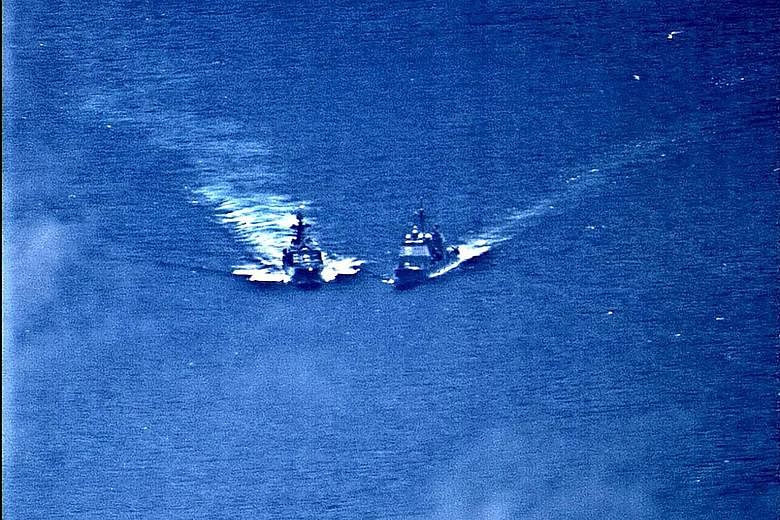MOSCOW • After years of increasing assertiveness by Russia's military in waters and airspace around its borders, a Russian destroyer nearly collided on Friday with a United States warship in the Philippine Sea.
Each side blamed the other for the episode, which took place in Asian waters that have previously been the site of an intense naval rivalry between the US and China, but from which Russia, though a Pacific power, had been largely absent.
Nato has repeatedly accused Russia's warplanes and warships of staging dangerous, threatening manoeuvres in the Baltic and Black seas, but the incident on Friday at around 11.45am was the first potentially catastrophic near miss involving Russian and US naval vessels so far from Russian shores since the end of the Cold War.
The US Navy's 7th Fleet, which patrols the Pacific, said the Russian destroyer's crew had navigated unsafely and forced the US warship into an avoidance manoeuvre. The Americans released video clips to corroborate their version of events.
Commander Clayton Doss, a spokesman for the 7th Fleet, said in the statement that the Russian destroyer had made an "unsafe manoeuvre" against the Chancellorsville, "putting the safety of her crew and ship at risk".
Russian state-controlled media suggested that the near collision, the second close encounter involving United States and Russia forces last week, had been staged by the Pentagon to coincide with a visit to Russia by Chinese President Xi Jinping, who has overseen a steady increase in economic and military ties between Beijing and Moscow.
China and Russia are not officially military allies, but they have staged joint military exercises and increasingly look to each other for leverage against Washington, with which both have severely strained relations.
Major-General Vladimir Bogatyrev, chairman of the National Association of Reserve Officers, told Russian state media that "it is not by chance that these actions happened during the visit to Russia by the head of the People's Republic of China".
The US, he added, had deliberately provoked the incident in the Philippine Sea in an effort to "demonstrate to us the supposed strength of the American fleet and lawless behaviour in the wide expanse of global seas".
But he also hinted that Russia was not merely an innocent bystander. "The protest of our sailors was completely justified," he said, without specifying what "protest" he was referring to.
A US official said the two ships nearly collided about 260km south of Okinawa, a Japanese island on which the US has had an airbase and various other military facilities since the end of World War II.
Russia, which has declined to give up territory seized from Japan in 1945, has no quarrel with US facilities in Okinawa.
The presence of Russia's navy south of Okinawa - more than 1,930km from the Russian Pacific Fleet's home port in Vladivostok - suggested less an effort to assert any Russian claims in the area than a gesture of support for China.

